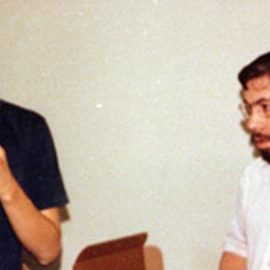

This article is an excerpt from the Shortform book guide to "The Dichotomy of Leadership" by Jocko Willink and Leif Babin. Shortform has the world's best summaries and analyses of books you should be reading.
Like this article? Sign up for a free trial here .
What makes a good team leader? How do you, as a leader, ensure that all of your team members perform up to standard?
As a leader, you must accept your team’s successes and failures: It’s your responsibility to ensure every team member is performing at a high standard. But if you push your team too hard, you’ll destroy your team’s morale and hinder their performance. According to Jocko Willink and Leif Babin, the authors of The Dichotomy of Leadership, there are two instances in which leaders ask too much of their teams: 1) imposing too many rules and 2) making training too difficult.
Here’s how to be a good team leader, according to Willink and Babin.
Only Enforce the Necessary Rules
The first way leaders push their teams too hard is by establishing and enforcing too many rules. Willink and Babin explain that many leaders falsely assume the best way to discipline a team is to force them to be disciplined about everything. For example, they enforce strict rules limiting the number of bathroom breaks per work shift or demanding absolute silence during a presentation, in hopes of strong-arming the team into being focused on the mission at all times. Wielding authority like this is counterproductive—enforcing rules your team knows don’t really matter will only cause them to resent you.
That being said, Willink and Babin are adamant that to maintain high standards, you must be willing to enforce the important rules, even if the team complains. What makes a good team leader is a big-picture perspective and a clear sense of what’s important than the more specialized team members below you. Don’t let your unwillingness to upset the team keep you from enforcing the rules you need to—you can’t afford to compromise on what really matters.
Willink and Babin explain that the fewer rules you impose, the more your team will respect the important rules you do enforce. For this reason, let your team work the way they want to, even if you’d prefer them to do it differently. Allow them to have some fun. When you do lay down rules, always clearly explain your rationale so the team fully understands why they’re important. This will motivate them to follow the rules and keep themselves accountable.
| Parenting With Only Necessary Rules In 12 Rules for Life, Jordan Peterson uses this same logic for rules and discipline in his parenting advice. Like Willink and Babin, Peterson claims that you should impose as few rules as possible on your children, but when those rules are important, you should enforce them by any means necessary. Many parents fail to effectively discipline their children because they’re afraid of becoming the kind of tyrannical disciplinarian that Willink and Babin describe. They don’t want to hurt their kids or earn their resentment. However, Peterson asserts that this lack of discipline harms children in the long run. Likewise, Willink and Babin argue that as a leader, you know what rules your team needs to follow to accomplish their mission and should enforce them even if your team complains. Similarly, Peterson argues that parents know the rules to follow to flourish in society and should enforce them even if the kids resist. Peterson’s rationale is that if you fail to teach your children how to behave properly (especially in a social context), society outside of your household will punish them far more harshly than you. For example, if you don’t prohibit your child from hitting other children, they will be disliked by adults and other kids, leading to shame and alienation. For the most part, this discipline doesn’t need to be heavy-handed. Willink and Babin’s advice to inspire your team to accept accountability applies to parenting as well. When your children reach a certain age, you’ll be able to explain why rules are important and motivate them to discipline themselves. However, when children are young, they won’t be able to understand some of your rules, even if you try to explain your rationale. For this reason, Peterson argues that in some cases, you may need to discipline by force. He cautions to exert only the minimum force necessary to correct your child. |
Challenge Your Team to Help Them Grow
The second way leaders commonly push their teams too hard is by putting too much pressure on them during training. Willink and Babin argue that deliberate training is necessary for a team to reach its full potential because facing consistently difficult challenges is necessary to improve. Using this logic, the authors claim you can train a team with no direct experience to do anything by putting them in increasingly difficult training scenarios.
However, the authors warn that if you place your team in situations that are too difficult for their current skill level, you’ll demoralize them. The team won’t improve and will resent you for making them needlessly suffer. Instead, slowly expand your team’s comfort zones by placing them in situations that are challenging, but not overwhelming.
| Fulfillment Through Training In Flow, Mihaly Csikszentmihalyi argues that tackling increasingly difficult situations is not only the best way to improve your skills but also the way to live the most fulfilling, enjoyable life. He specifically distinguishes between “pleasure” and “enjoyment,” arguing that the enjoyment that comes with conquering a challenging yet satisfying task (like completing a SEAL team training exercise) is far more fulfilling than the pleasure of a sensory experience (like eating food or watching TV). He calls this experience of being fully immersed in an enjoyable task “flow.” The problem that Willin and Babin diagnose in this section—a goal that’s too difficult—not only impedes your learning but also your overall happiness. If you face a situation that’s too challenging, the anxiety takes you out of flow. Likewise, if you’re working on a task that poses no challenge to you, you’ll get bored and won’t experience flow. If you find yourself in either of these situations, find a new goal that suits your current skill level. |

———End of Preview———
Like what you just read? Read the rest of the world's best book summary and analysis of Jocko Willink and Leif Babin's "The Dichotomy of Leadership" at Shortform .
Here's what you'll find in our full The Dichotomy of Leadership summary :
- How to master the many different dichotomies that make a great leader
- How to successfully lead others and yourself
- How good qualities can become detrimental when taken too far






